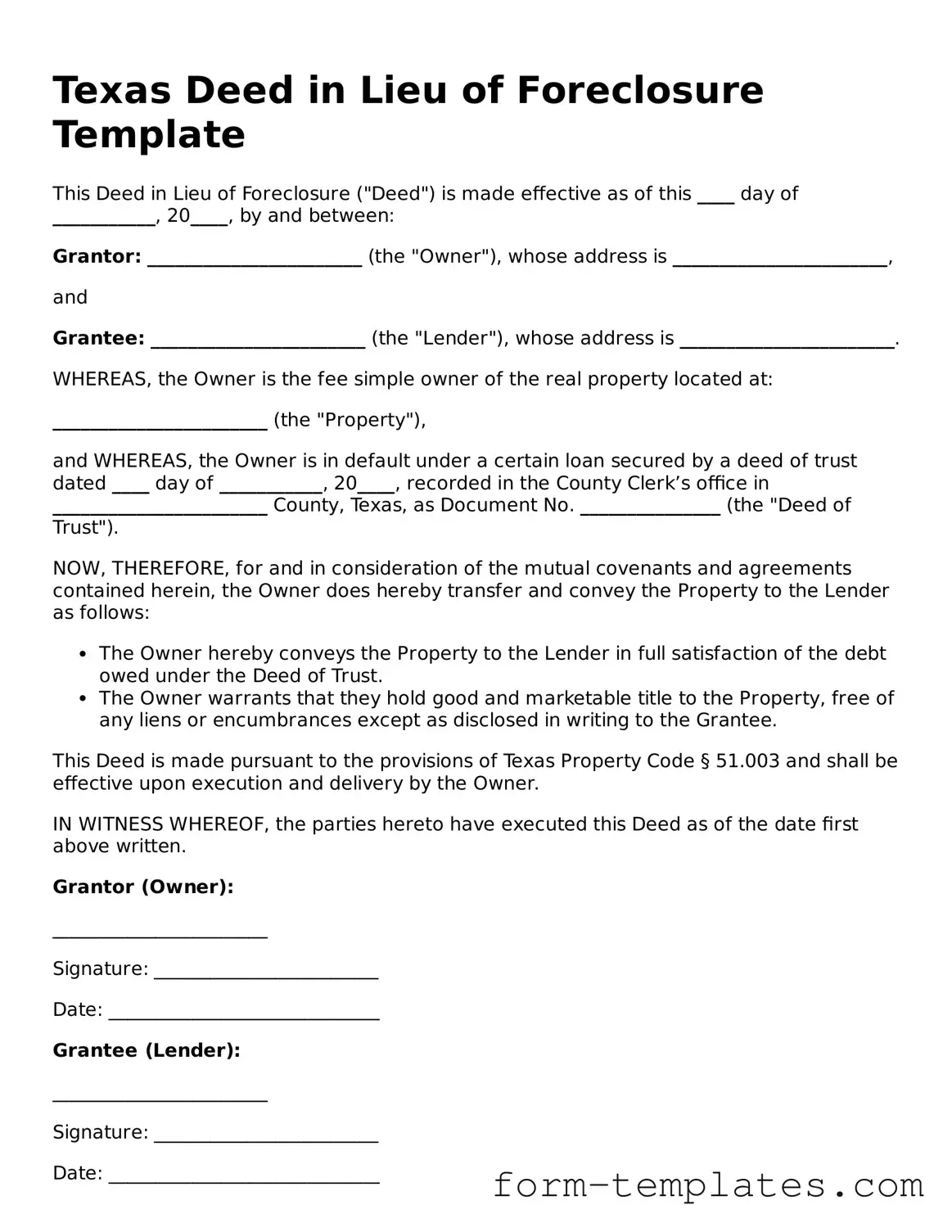Texas Deed in Lieu of Foreclosure Template
This Deed in Lieu of Foreclosure ("Deed") is made effective as of this ____ day of ___________, 20____, by and between:
Grantor: _______________________ (the "Owner"), whose address is _______________________,
and
Grantee: _______________________ (the "Lender"), whose address is _______________________.
WHEREAS, the Owner is the fee simple owner of the real property located at:
_______________________ (the "Property"),
and WHEREAS, the Owner is in default under a certain loan secured by a deed of trust dated ____ day of ___________, 20____, recorded in the County Clerk’s office in _______________________ County, Texas, as Document No. _______________ (the "Deed of Trust").
NOW, THEREFORE, for and in consideration of the mutual covenants and agreements contained herein, the Owner does hereby transfer and convey the Property to the Lender as follows:
- The Owner hereby conveys the Property to the Lender in full satisfaction of the debt owed under the Deed of Trust.
- The Owner warrants that they hold good and marketable title to the Property, free of any liens or encumbrances except as disclosed in writing to the Grantee.
This Deed is made pursuant to the provisions of Texas Property Code § 51.003 and shall be effective upon execution and delivery by the Owner.
IN WITNESS WHEREOF, the parties hereto have executed this Deed as of the date first above written.
Grantor (Owner):
_______________________
Signature: ________________________
Date: _____________________________
Grantee (Lender):
_______________________
Signature: ________________________
Date: _____________________________
This Deed may be recorded in the appropriate real estate records of ________ County, Texas.
